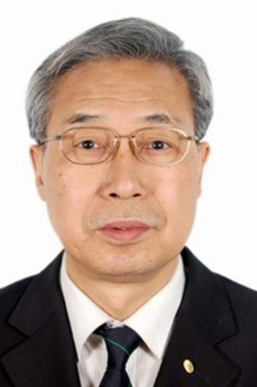Special Plenary Session
-
Dr. Martin Schadt
CEO,MS High-Tech Consulting;
Honorary Professor,Nanjing University
-
Prof. Zhongcan Ouyang
Professor and Academician of CAS,
Institute of Theoretical Physics,CAS
To celebrate Dr. Martin Schadt’s 80th birthday
Martin Schadt was born in Liestal, Switzerland. After having gained practical experience as electrician he majored in experimental physics at the University of Basel, Switzerland, where he received his PhD in 1967. He was then granted a two-year post-doctoral fellowship at the National Research Council, Ottawa, Canada, where he continued his basic research on electronic and optical properties of organic semiconductors. As a spin-off from his research Martin Schadt and Digby F. Williams invented and patented the first solid state, organic light emitting display (OLED) in 1969.
Martin Schadt’s first industrial association was with the watch company Omega, where he studied atomic beam time-standards. In 1970 he joined the newly established physics R&D group of the Central Research Laboratories of F. Hoffmann-La Roche Ltd., Basel. In 1970 W. Helfrich and M. Schadt invented and patented the twisted nematic (TN)-effect at F. Hoffmann-La Roche. Their TNpatent was granted in 20 countries and licensed world-wide by Roche to the emerging field-effect LCD industry. The invention initiated a paradigm change towards today’s polarization-controlled flat panel liquid crystal displays (LCD) industry which generated $150billion turnover in 2016.
In 1972, Roche temporarily stopped liquid crystal R&D, thus Wolfgang Helfrich left Roche whereas Martin Schadt focused from 1972-74 on biophysics research.
Roche decided in 1974 to resume liquid crystal R&D, enabling Martin Schadt to design and implement an interdisciplinary liquid crystal research and development strategy, combining physics and functional organic materials R&D. He continued with co-workers R&D of the TN-effect and its applications and pioneered correlations between molecular structures, LC-material properties and display performance. This enabled the development of new liquid crystals for field-effect LCDs. Parallel to its TN-LCD licensing business this led to the establishment of the pharmaceutical company Roche as a major liquid crystal materials supplier for the emerging LCD-industry.
Apart from his pioneering work on OLEDs, LCDs and liquid crystal materials, Schadt and collaborators invented and patented the linear photo-polymerization (LPP) technology in the early 1990s, enabling alignment and patterning of monomer and polymer liquid crystals by light instead of mechanically. This opened up novel LCD configurations and LCD operating modes as well as high resolution optical polymer liquid crystal thin-films. The technology has been licensed word-wide.
Until 1994 Schadt headed the Liquid Crystal Research Division of Roche. Based on his photoalignment technology the Division was turned into the spin-off company ROLIC Ltd in 1994, an interdisciplinary Research and Development Company which Martin Schadt built-up and lead as its first Head of Research, CEO and delegate of the Board of Directors until his retirement from the operating business in October 2002. He has been active as a scientific advisor and independent inventor since 2004, collaborating world-wide with academic and industrial research organisations. He is inventor or co-inventor of more than 146 basic patents granted in Europe (EP) and holds more than 117 US patents. Most of his patents are commercially used. Dr. Schadt has published 193 papers in leading scientific journals, including chapters in 6 books.
Dr. Schadt is a Fellow of the European Academy of Sciences (EURASC), the US National Academy of Inventors (NAI) and the Society for Information Display (SID). He is Honorary Professor of Sichuan University, Chengdu (2013) and of Nanjing University, Nanjing. Among others, Dr. Schadt has received the following Awards: European Inventor Award 2013 for Lifetime Achievement, Charles Stark Draper Prize of the US National Academy of Engineering (NAE), Frederiks Medal of the Russian Liquid Crystal Society; Blaise Pascal Medal of EURASC, George W. Gray Medal of the British Liquid Crystal Society, Eduard-Rhein Technology Prize, Jun-IchiNishizawa Medal of IEEE, Robert-Wichard-Pohl Preis of the German Physical Society, Aachener und MünchenerPreisfürTechnik und angewandteNaturwissenschaften, Karl Ferdinand Braun Prize of SID, Roche Research and Development Prize.
A SHORT INTRODUCTION OF PROF.ZHONGCAN OUYANG
Professor Zhong-can Ou-Yang graduated from the Automatics Department of Tsinghua University in 1968, and received his Ph.D. from the Physics Department of Tsinghua University in 1984. From 1987 to 1988, he worked with Prof. W. Helfrich at FU Berlin as an Alexander von Humboldt Foundation fellow. In 1989, he joined the Institute of Theoretical Physics, Chinese Academy of Sciences (ITP-CAS). From 1998 to 2007, he served as the director of ITP-CAS. He is academician of CAS (since 1997), and member of the Third World Academy of Sciences as well (since 2003).
Professor Ou-yang has made distinguished contributions to a number of theoretical subjects in soft matter physics and biophysics. Based on the Helfrich membrane model, he derived a general shape equation for vesicles of spontaneous curvature, and obtained an exact analytic solution for a long-standing biological problem----the biconcave discoidal shape of human red blood cells. He proposed a new theory of chiral membranes to explain the low- and high-pitch helical structures formed by tilted chiral lipid bilayers. Later he extended the Helfrich model to study the shapes of carbon nanotubes, the vesicle-to-tube shape transition of bi-peptide aggregates, and the icosahedron shape of virus capsid and nano-aggregates. In 1999, he proposed an elastic model of double-strand DNA, which has been included as a chapter in the Handbook of Theoretical and Computational Nanotechnology (American Scientific Publishers, 2003). He has published two books, Geometric Method in the Elastic Theory of Membranes in Liquid Crystal Phases (World Scientific, 1999) and From Soap Bubbles to Bio-membranes (in Chinese), the latter of which has been recognized as one of the most popular scientific readings in China.
For his academic achievements, Professor Zhong-can Ou-yang has been awarded several renowned prizes, including the Achievement-in-Asia Award of The Overseas Chinese Physics Association in 1993, National Natural Science Award (second class) in 1999, Ho Leung Ho Lee Achievement Prize in 2004,and JSAP Fellow International in 2015.

